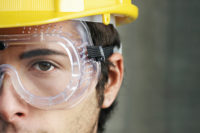Foot injuries are among the most prevalent incidents in the workplace, with overexertion listed as the No. 11 most frequently reported injury, and slips and trips as the second. The effects are staggering: complications resulting from overexertion account for nearly $13.6 billion in benefits costs per year and slipping/tripping leading to body trauma, further medical complications and muscle injuries.
Employees who suffer from an accident in the workplace may miss work entirely, experience lower productivity and comfort or increase expenditures in health benefits. Safety managers must avoid these hazardous and costly risks by implementing solutions that minimize danger and promote overall health and wellness for employees, which starts with the feet.
Here are some tips for identifying the right foot protection based on your workplace’s specific needs:
Pay attention to nonverbal cues
Along with any leadership role, it’s important to be attentive to your employees. Simply talking about safety does not ensure a safer work environment. Although having conversations about health and safety with employees is important, it’s vital to visually inspect all workplace areas and employee routines to look for indications of impending injuries or maladies relating to employee health.
Are your employees hunched over due to backache?
Are they taking sick days due to discomfort in their feet, ankles, knees, hip or back? Much of the pain workers feel in their hips, neck and back is directly correlated to their feet, including how they walk, stand and move on a regular basis.
If you are seeing these nonverbal cues, it’s time to implement a footwear solution with 360-degree foot protection. Look for premium insoles, with dual layer memory foam that provide increased comfort, support and shock absorption. Insoles offer 100-percent contact with the body and reduce muscle strain, injury, and fatigue while increasing balance and employee productivity.
Conduct regular ergonomic assessments
You may have heard the statement that sitting is the new smoking2. It may sound dramatic, but scientific research shows that a sedentary lifestyle is bad for your health. Studies conducted3 by Dr. James Levine, Director of the Mayo Clinic - Arizona State University Obesity Solutions Initiative, show that “sitting is more dangerous than smoking, kills more people than HIV and is more treacherous than parachuting. We are sitting ourselves to death.”
But little attention has been devoted to the harmful effects of prolonged standing at work, despite past studies linking to chronic back pain and musculoskeletal disorders (MSDs)3 in the limbs. Conducting ergonomic assessments of your employee’s workstations can help identify the type of footwear solution that is the best fit for a safe, comfortable and productive work environment.
For example, look at whether your employees move from station to station or stand in one location all day. If employees are mobile, proper ergonomic dual-layer memory foam anti-fatigue insoles are a good solution because they mold to the feet, provide comfort, relief, are machine washable and come in a variety of sizes.
A successful health and safety program requires engagement from the entire workplace. Employees that are sedentary or stand in one place for most of the day should be incentivized to move around and walk periodically. These employees would also benefit from the correct anti-fatigue insoles because they are given 360-degree footwear protection, ensuring comfort throughout the day.
Evaluate the work environment
Many work sites require workers to wear foot protection from extreme temperature or shards of metal, nails and glass. Consider your workplace and whether these factors could pose risks to your workers. Implementing puncture resistant, anti-fatigue insoles can reduce and prevent foot punctures, when worn in conjunction with the appropriate footwear. Utilizing protective work boots and products that offer total toe protection to reduce these types of risks, such as composite toe overshoes, greatly increases the effectiveness of your footwear and safety program.
Analyze the cost, maintenance & quality
Implementing protective, ergonomic solutions is a long-term investment. Without them, employee injuries are even more costly, due to accident investigations, employee downtime, increases in insurance premiums and medical services.
If the cost of ergonomic solutions is a concern, don’t fret. There are plenty of affordable options on the market, in addition to beneficial cost savings in the future. If there’s a more expensive product you’re considering, but the cost seems unreasonable, consider the overall quality of the product. Analyze its utility, longevity and effectiveness, and compare it to the other options at hand. Some products may require a higher buy-in, but lower costs to maintain and replace over time.
Anti-fatigue matting, on the one hand can be costly to install, maintain, clean, and replace. It’s limited in its ability to fully cover the workplace. Another option — anti-fatigue insoles — reduce pain and fatigue while increasing shock absorption and comfort. They provide 360-degree workplace protection, and are easy to install, clean and replace.
Injuries relating to feet can jump up at any given moment, whether we’re prepared or not. As these traumas can lead to further complications, getting ahead of the curve and addressing issues before they arise is key to reducing risk. Stay on your toes by analyzing employee health, wellness and safety. Evaluate how foot protection methods are working while remaining adaptable and changing as needed. Investing in the health and safety of your employees ensures a stronger and more successful workplace and business.
Sources






